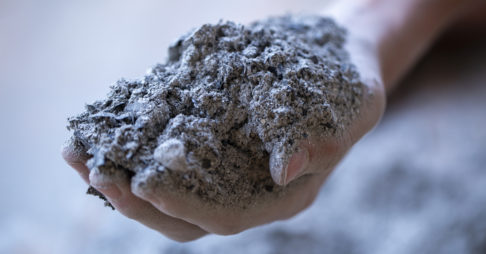Surface modification method and functional design of fly ash

Surface modification and refunctionalization of fly ash particles is one of the main means to improve their high value-added utilization. Surface modification of fly ash particles and loading some functional additives can obtain a new type of functional material . The method can greatly increase the added value of the fly ash, can greatly mobilize the enthusiasm of the enterprise for the deep utilization of the fly ash, and promote the deep resource utilization of the fly ash.
Present Status of Surface Modification Technology of Fly Ash
By modifying pulverized coal, a product with a larger specific surface area can be obtained, which can better exert its adsorption performance. Using physical modification methods, such as mechanical grinding, microwave treatment, ultrasonic wave and high temperature treatment, etc., can destroy the network structure of fly ash glass body, increase the specific surface area, and can also change the electromagnetic properties of fly ash particles by coating. Modification methods, such as fire modification, hydrothermal modification, acid modification, alkali modification, mineral salt modification, calcium oxide treatment, etc., can also destroy the silicate network structure, promote the dissolution of the surface of the glass body, and improve the ratio surface area and ion exchange capacity.
Methods of chemical modification also include modification using surfactants, such as cationic surfactant treatment, coupling agent treatment, and stearic acid treatment.
Cationic surfactants can change the surface electrical properties of fly ash particles and improve their surface adsorption capacity, and are mainly used in various wastewater treatment processes; stearic acid can achieve the purpose of hydrophobic modification, making fly ash in the polymer ( Such as PVC, PP) as a filler; the coupling agent modification treatment method can improve the dispersibility of inorganic pigments and the adhesion of glass and metal surfaces, etc. These methods have good effects in the treatment of fly ash, and have been It shows good results in various applications.
Surface functional design of fly ash particles
There are many methods for functional design and modification of the surface of fly ash particles, generally through the design of groups on the interface, and then loading the corresponding functional groups to obtain fly ash-based functional materials.
(1) Fly ash-based hydrophobic film material
Hydrophobic films have many applications, such as building exterior walls, packaging materials, and mildew-proof places. For example, the surface of coal fly ash is hydrophobically modified with cationically dispersed rosin gum to prepare a hydrophobic fiber material.
The fly ash was modified with stearic acid, and then the relationship between the pigment volume concentration and the critical pigment volume concentration in the organic/inorganic composite material was used to adjust the hydrophobic properties of the film.
In a word, the hydrophobic film material prepared by using fly ash has low cost, can be used in occasions with high requirements for packaging materials and mildew resistance, and has good practicability.
(2) Fly ash-based composite humidity control material
The fly ash-based humidity-conditioning material is a composite humidity-conditioning material that can be obtained by compounding hydrophilic polymers and salts after hydrophilic modification of fly ash, which can be recycled to prepare powder or paint. Applied to different occasions, it has the advantages of passive, intelligent humidity control, low cost, energy saving and environmental protection.
(3) Formaldehyde capture material
The use of modified fly ash to load formaldehyde scavenger is equivalent to combining the two effects of physical adsorption and chemical neutralization. On the one hand, the physically adsorbed formaldehyde reacts with the scavenger, and there is no problem of desorption, which completely eliminates formaldehyde; It is easy to use and can eliminate formaldehyde more completely.
Utilizing the loading of formaldehyde scavenger on the surface of fly ash, an environmental purification material with excellent performance can be obtained, which has a very high added value. While having good economic benefits, it also has very good social benefits.
The surface functional modification of fly ash has very strong pertinence, which can turn solid waste fly ash into a functional material. In short, only reasonable, full and deep utilization of fly ash can truly make fly ash no longer a solid waste, but an industrial raw material with low price and excellent performance.
